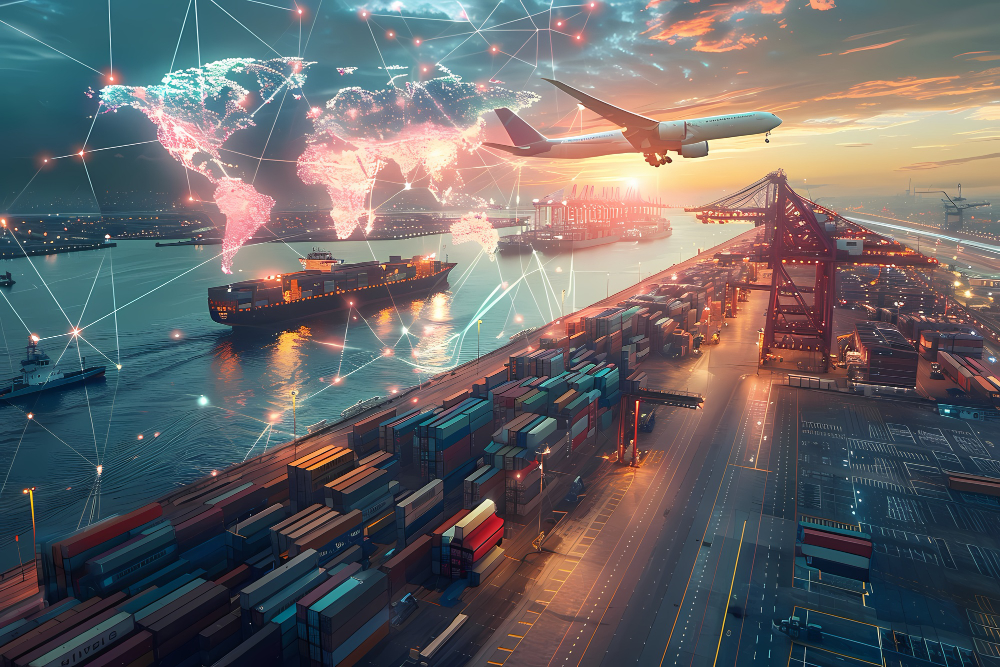Beyond Cost Cutting: How the Next Generation of Supply Chains Will Be Built on AI, Automation, and Virtual Delivery Centers (VDCs)

Supply chains are the backbone of every industry. They determine cost efficiency, agility, and resilience—all of which are under immense pressure today.
For decades, companies have focused on incremental cost savings—squeezing suppliers, negotiating freight rates, optimizing warehousing, and implementing lean manufacturing. But those easy wins are gone.
Today’s supply chains face an entirely new set of challenges:
✅ Inflationary pressure and rising operational costs
✅ Geopolitical instability disrupting trade routes
✅ Shifts in global labor markets and skill shortages
✅ Rising demand for sustainability and regulatory compliance
✅ The rapid evolution of AI, automation, and analytics
Traditional cost-cutting is no longer enough. The companies that win in the next decade won’t be those that simply cut costs—they will be the ones that reinvent their supply chains using AI, automation, and Virtual Delivery Centers (VDCs).
This is not just about survival—it’s about competitive advantage.
For years, companies have approached supply chain costs reactively—cutting budgets when margins are squeezed and ramping up spending when demand grows.
This reactive approach no longer works.
Instead, companies must align their cost strategies with their growth ambitions.
- Companies under cost pressure → Need to consolidate footprints, streamline operations, and invest in digital efficiencies.
- Companies in growth mode → Must reallocate cost savings into automation, AI, and new business models.
The best companies don’t just cut costs—they reinvest them into smarter supply chains.
The future belongs to companies that view supply chains as profit centers, not cost centers.
You can’t optimize what you don’t measure.
Most companies have limited visibility into their supply chain costs because of:
- Fragmented data across multiple vendors and systems
- Complex, multi-tier supplier networks
- Unclear cost drivers hidden within operations
The solution? AI-powered digital twins.
What is a digital twin?
A real-time, AI-powered model that replicates an entire supply chain, tracking costs, inefficiencies, and potential risks.
- Scenario Planning: Run simulations for demand spikes, supplier failures, and logistics disruptions.
- Cost Breakdown: Categorize costs into controllable, influenceable, and static expenses to prioritize efficiency efforts.
- Automated Insights: AI-driven analytics identify hidden inefficiencies before they impact margins.
Example: A global manufacturer used AI-driven digital twins to optimize freight costs—leading to a 12% reduction in transportation expenses while improving on-time deliveries.
Companies that master AI-driven cost modeling will have a lasting competitive advantage.
Most cost-saving initiatives fail. Why?
Because employees revert to old ways of working once short-term savings goals are met.
The solution? Make cost efficiency part of company culture.
AI-powered workforce optimization can drive permanent change.
How?
✅ AI-driven performance metrics: Track cost efficiency in real-time at every level of the supply chain.
✅ Gamified cost-awareness programs: Incentivize teams to suggest and implement cost-saving ideas.
✅ AI-powered training tools: Ensure employees understand how automation, predictive analytics, and cost controls impact the bottom line.
Example: A logistics company integrated AI-driven dashboards to track cost savings in warehousing and fleet management. The result? A 9% reduction in operating costs and an increase in employee-driven cost-saving initiatives.
AI is not just an automation tool—it’s a culture enabler for long-term cost efficiency.
Traditional supply chains are fragile. The pandemic, trade wars, and raw material shortages exposed their weaknesses.
Companies can no longer afford to rely on static supply chain models.
The solution? Build resilience through AI, automation, and redundancy planning.
How to build a more resilient supply chain:
✅ AI-powered demand forecasting to adjust supply strategies in real time.
✅ Diversified sourcing strategies to avoid over-reliance on a single region.
✅ Automated risk assessment tools that predict and mitigate supply chain disruptions.
✅ Digital supplier ecosystems that enable dynamic contract negotiation.
Example: A global electronics company used AI-powered sourcing tools to shift production from China to Vietnam in under six months, avoiding $100M in potential tariff costs.
The companies that build flexible supply chains today will dominate the next decade.
The biggest inefficiency in supply chains isn’t logistics—it’s the way companies manage execution.
Today’s supply chain operations rely on either in-house teams or outsourced vendors. Both models have fundamental weaknesses:
- In-house teams lack scalability and are expensive to maintain.
- Outsourced vendors create rigid dependencies and lack control.
The solution? Virtual Delivery Centers (VDCs).
What is a VDC?
A Virtual Delivery Center (VDC) is an AI-powered, on-demand execution team that combines the scalability of a gig platform with the reliability of an agency model.
- For companies: VDCs provide instant access to specialized supply chain talent without the overhead of full-time hires.
- For talent: VDCs offer continuous work, skill development, and protection from rating bias.
How VDCs transform supply chain cost efficiency:
✅ AI-powered cost optimization teams that dynamically adjust pricing, sourcing, and fulfillment strategies.
✅ On-demand logistics experts who ensure continuous improvement in transportation and warehousing efficiency.
✅ Automated procurement and supplier management to reduce contract costs and prevent supply disruptions.
✅ Seamless integration with AI-driven analytics for real-time decision-making.
Why companies should transition to VDCs now:
- Lower operational costs compared to in-house teams
- Greater agility than traditional outsourcing
- Full control over execution, unlike rigid third-party contracts
- Scalability that allows companies to expand or contract teams on demand
In the next five years, companies that integrate Virtual Delivery Centers (VDCs) will operate 30-40% leaner than competitors.
For years, companies have approached supply chain cost-cutting as a short-term fix.
That era is over.
The companies that win in the next decade will:
✅ Reallocate supply chain savings into AI, automation, and analytics.
✅ Use AI-powered digital twins to drive real-time cost optimization.
✅ Embed cost-awareness into corporate culture using AI-driven performance metrics.
✅ Build flexible, resilient supply chains that can rapidly adapt to change.
✅ Leverage Virtual Delivery Centers (VDCs) for scalable, outcome-based execution.
The companies that act today will dominate tomorrow’s supply chain landscape.
Will you lead the revolution—or struggle to catch up?